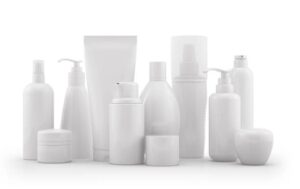With significant financial ramifications from taxing non-sustainable packaging and the growing concern over plastic pollution, it’s essential to look for recyclable products. One excellent option is rPET.
rPET is a great way to reduce landfill waste and save energy. It also cuts greenhouse gas emissions and requires fewer fossil fuels to manufacture than virgin PET plastic.
It’s a great way to reduce landfill waste.
 rPET stands for recycled PET, and it’s one of the most sustainable options for packaging. It reduces greenhouse gas emissions and requires less energy compared to virgin PET. In addition, it’s an affordable option for companies looking to go green. However, there are a few things to remember when choosing rPET recyclable packaging.
rPET stands for recycled PET, and it’s one of the most sustainable options for packaging. It reduces greenhouse gas emissions and requires less energy compared to virgin PET. In addition, it’s an affordable option for companies looking to go green. However, there are a few things to remember when choosing rPET recyclable packaging.
First, you must understand the difference between pre-consumer and post-consumer recycled plastic. Pre-consumer PET refers to plastic recycled before it ever reaches the consumer, such as from a recycling bin or a container deposit system. Post-consumer PET is a recycled material collected from landfills, oceans, and other areas. Depending on the source, this can include plastic that has been discarded incorrectly or ended up in the natural environment. Using rPET can help to take plastic out of our environment, but it’s essential to use it only where it’s needed.
Plastic waste can leak into the Earth’s environment and pollute air, water and soil if not correctly disposed of. In addition, it consumes landfill space and generates unnecessary emissions. It’s also important to know that rPET can be recycled repeatedly without losing its quality or strength, making it a great alternative to non-recyclable bottles.
Unlike most other plastics requiring oil and natural resources, rPET is made from renewable plant sources. Typically, it’s made from corn, which can be grown repeatedly without depleting the planet’s natural resources or reducing the global food supply. Additionally, it’s 100% recyclable and can be used again for more products, cutting down on the need for petroleum-based plastics.
As more people become aware of sustainability’s importance, more consumers seek rPET. As a result, many manufacturers have chosen to use rPET for their beverage bottles and other products, and more retailers are adding it to their inventory. You can tell if a bottle is made with rPET by looking for the #1 recycling symbol. It’s also worth mentioning that rPET is versatile and can manufacture eco-friendly bottles, fibres for clothing and insulation, industrial straps and sheets, carpet fibres, and more.
It’s a great way to save energy.
If you’re an environmentally conscious consumer, you might want to consider switching to rPET bottles. This recycled plastic is a great way to save energy because it requires less energy to create than virgin PET. It also uses less fossil fuels, which means fewer carbon emissions. In addition, it’s solid and flexible, so it’s an excellent choice for packaging.
The recycling process for rPET recyclable packaging is also more efficient than other recycled materials. This is because it doesn’t require much heating to melt the plastic and can be done at lower temperatures than different types of recycled plastic. This results in a higher yield of recycled material and reduces the amount of waste produced. This type of recycling is also better for the environment because it does not release volatile organic compounds into the surrounding environment.
In addition to its environmental benefits, rPET is cheaper than other types of recycled plastic. It can save companies up to 79% in energy costs compared to virgin PET. In addition, it requires significantly less energy to transport and store, which can help businesses reduce their overall expenses.
To create rPET, manufacturers first need to collect used PET plastic. They then mechanically break down the bottles and convert them into flakes. These flakes are then spun into yarn and woven into fabric products like shoes and clothing. Many retailers, such as Converse, Girlfriend Collective, and Rothys, use rPET in their products.
One of rPET manufacturers’ most significant challenges is finding enough raw materials to meet demand. This is because most PET plastics are not recycled, so they end up in landfills instead of being repurposed. However, intelligent producers are introducing post-industrial recycling methods to increase supply and decrease costs.
As more consumers choose to buy rPET bottles, it will lead to more demand and a higher market for recycled plastics. This will lead to lower costs and more waste removal from landfills — suitable for everyone.
It’s a great way to reduce greenhouse gas emissions.
You’ve probably seen it on reusable bags, t-shirts, and other clothing: “Made from recycled water bottles!” The material you see is called rPET recyclable packaging (recycled polyethylene terephthalate) plastic, or rePET for short. This is a fully sustainable and recyclable material derived from PET plastic consumers use and then throw away.
After being collected and taken to a recycling facility, this plastic is separated, cleaned, and transformed into small pellets of rPET resin. This recycled material can then be reused to produce PET products like plastic containers, trays, and lids.